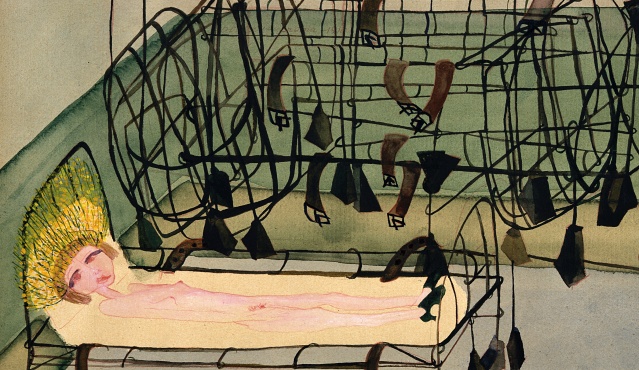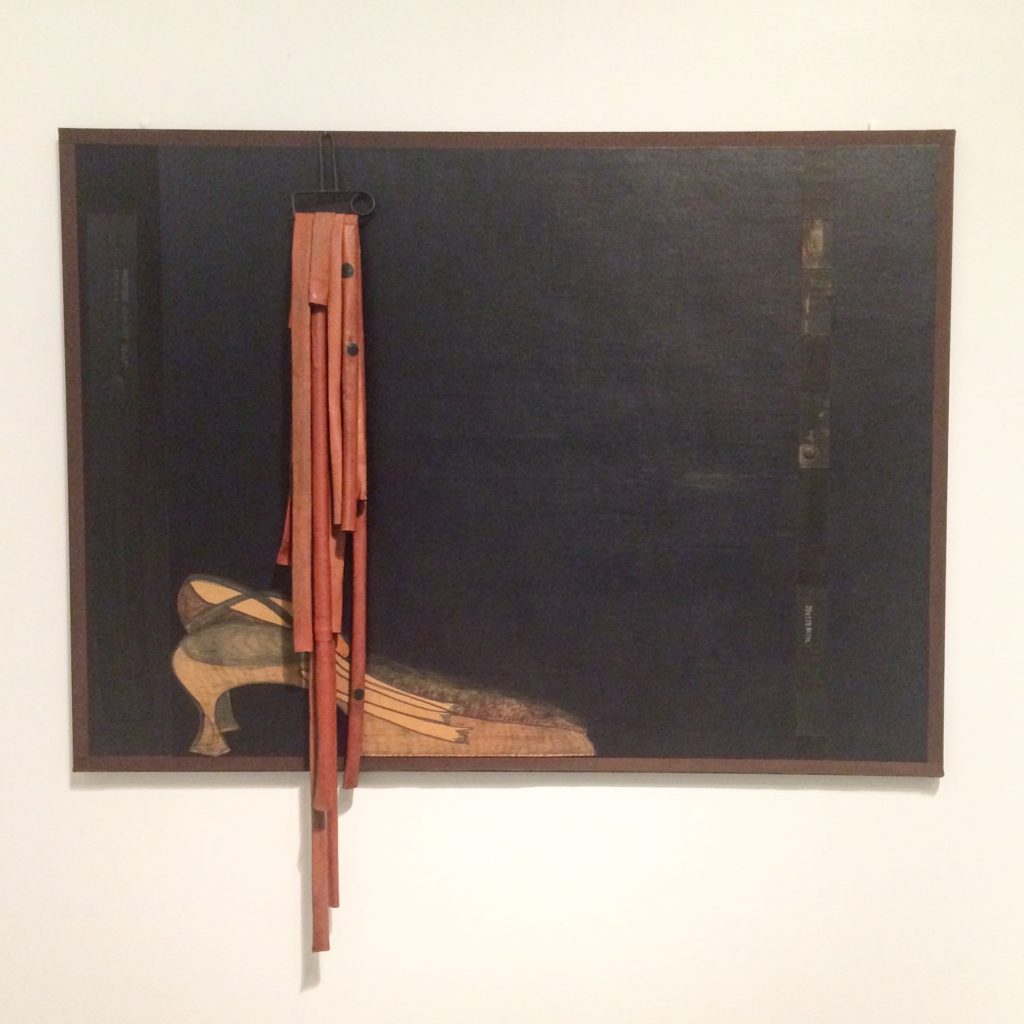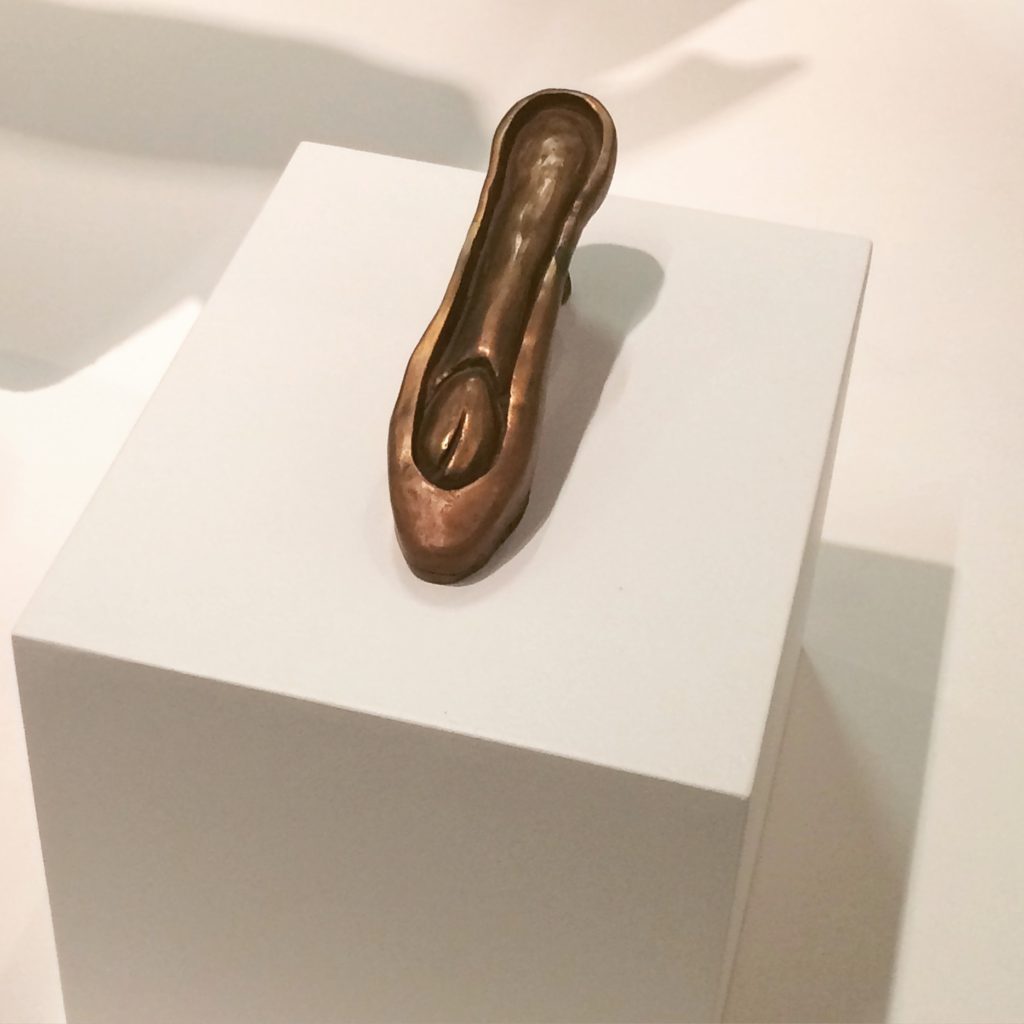Desire, Disgust, and Subversive Body Parts at Carol Rama: Antibodies
Carol Rama: Antibodies at the New Museum is a disquietingly sexual, weirdly liberating, and vividly physical show. It is a show whose through lines are bodily fluids, genitalia, fetishes, and limbs. I’ve never seen anything just like it. Or, I’ve never seen a collection of objects that hang together just like it. Watercolors of women with snakes emerging from their vaginas share space with naked bodies confined to wheelchairs and in red high heels. You turn the corner and then there are abstract works––yet they have eyes and some have vaginas and others have spikes. From here, there is a room of bicycle tubes splayed down canvases then industrial plans decorated with marker drawings of isolated limbs or contorted sexual positions. Then, a deep black bedspread followed by canvases exploring the connection between femininity and mad cow disease.


In a roughly chronological exhibition, Antibodies collects a group of work that is certainly provocative, particularly Rama’s earlier watercolors of bestiality and brightly colored genitalia. Yet, these are not mere provocations. It is not so much that these watercolors invoke imagery subversive for the 1940s––and 1940s Fascist Italy, for that matter––as it is that Rama plays with our understanding of the medium. She transforms this medium associated with femininity to create images of disobedient sexuality. The female figures have flattened bodies (some are restrained in metal contraptions, some crouch, others lie on their back and pull up their knees), oversized almond eyes, flower crowns, and red lips with pointed and protruding tongues. They are sexual but not sexually objectified: women with desirable yet dangerous bodies who open their legs but do not let anyone in too close.
Throughout these watercolors, Rama returns repeatedly to her Dorina figure. One can see a few examples of her in the show, a reclining woman with a snake emerging from between her legs. The curators interpret the snake as a phallus, arguing that it serves to de-gender the figure and so complicate its overt sexuality. The snake, however, can also be read as a dildo of sorts. This way, it renders the Dorina a scene of autoerotic female pleasure in which men are extraneous. The snake is a source of gratification rather than a biblical creature of sin.

With snakes emerging from vaginas yet pleasuring them as they writhe, Rama renders the body a complicated site of disgust and pleasure. Still, to me, the most disquieting images are not these watercolors but Rama’s gomme (rubber) works from the 1970s. Breaking down the inner tubes of bicycle wheels, Rama hangs these tubes down on dark canvases. They look like flayed skin or limp body parts, and they intrude on our space, whether we like it or not. This is counter to the watercolors, whose figures push us away even as we try to look closer. Rama’s Bricolages from the 1960s also push off the canvas, with plastic eyeballs hovering in sea of red paint raised to form a vulva (in a work from 1966 entitled Maternità [Maternity]) or with taxidermy elements glued on cardboard. In Rama’s creations, female sexuality and erotic fantasies refuse repression, bursting from flat space to make us confront them. They are watching us.

What grounds this diverse presentation of Rama’s work in Antibodies is Rama’s own words. These have been pasted up as wall text in short quotes that accompany the progression of the show and comment on particular elements of the works on display in any given section. I really enjoyed the feeling of immersion in Rama’s voice as much as her work. This was an artist incredibly interested in objects, in how we fetishize parts of objects and parts of bodies and how her art could liberate these objects and body parts from their designated and restrained function in society. And so we read her words explaining that the tongue is confidence, loose limbs are as her childhood, rubber is the suicide of her father, who killed himself after his tire factory closed. She writes about prosthetic feet and later we see a sculpture in which she sculpts a penis in a shoe.

Gabriella is a senior at Fordham College Rose Hill. She is double majoring in Art History and English, with a focus on Modernism.